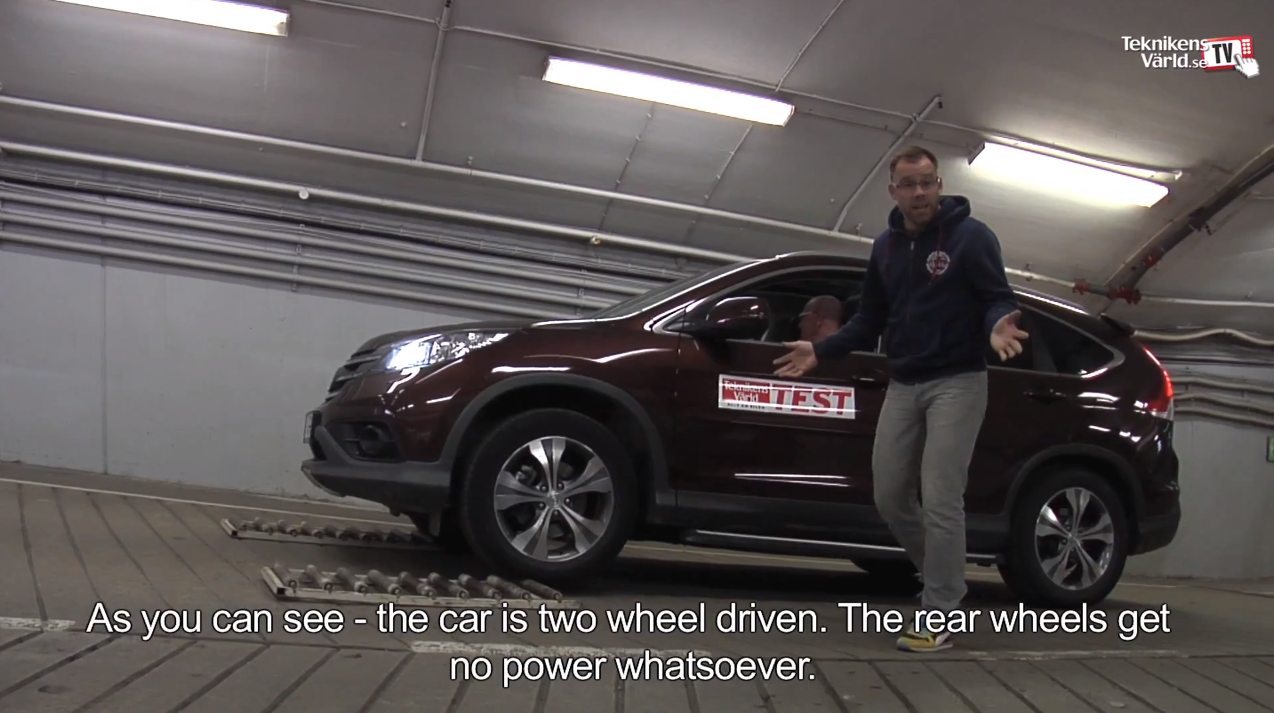Update: Attention All Honda Owners: Your 4x4 CR-V Might Not Be A 4x4 After All
I’ve just received an email simply titled: Honda CR-V’s 4WD system is not working – again. In the email there is a press release which reads…
Teknikens Värld is testing the four-wheel drive system in Sweden’s 20 best-selling SUVs. Honda CR-V proves once again that its system doesn’t deliver what it promises.
Last year Teknikens Värld tested the 4WD system in Honda CR-V. We then discovered that Honda’s 4WD system didn’t perform well at all. The system overheated when the surface was slippery. The CR-V wasn’t able to drive uphill when the traction was poor. The front wheels were just spinning and the rear wheels were not moving at all.Honda explained that is was a built-in functionality to spare the mechanical parts of the system. But Honda did listen to our criticism and they shortly after offered all their customers in Sweden a software update to eliminate the problem.
We then tested the CR-V again with the updated software and the problem with the 4WD system was gone. CR-V was now able to run up the hill on the slippery surface.
We have now performed the same test again, now with Honda CR-V model year 2015. As you can see in the movie above the problem is back. The CR-V is not able to climb uphill when the front wheels have no friction. The rear wheels are once again not moving. After 15-20 seconds the CR-V instead slides off the low friction rolls.
Our test method with low friction rolls was approved by Honda last year. The method, which is very realistic, has also been adopted by some automakers, such as Subaru.

As you can see from the video at the top of this page, the 4x4 system clearly isn’t doing what it should be; the front wheels spin furiously, while the rears do nothing to help drive the car forward. The demonstration with the Ford Kuga model highlights the Honda’s shortcomings.
We spoke to Honda UK earlier today, but are yet to recieve a statement. If the software fault does affect UK and European models, a recall to update the system could prove very costly.
Update: we’ve now received an official statement from Honda UK which reads:
Honda’s AWD system uses a compact, lightweight and fuel efficient rear differential. Due to this construction, certain torque limits are set to enable the unit to perform effectively in real world conditions, while not exceeding the overall strength of the unit.
In real world conditions, regardless of the surface, some amount of friction is available to both front and rear wheels. The AWD system allocates driving torque to the front and rear wheels in order to achieve the best possible driving force, whilst keeping within the torque limits of the rear differential.
In the roller test shown this time, the front wheels have zero friction and the rear wheels have unlimited grip, therefore if all available torque required to move the vehicle uphill was transferred to the rear differential, the torque limit of the unit would be exceeded. Because the torque is limited as described above, the vehicle will not climb the slope in this test condition.
If the vehicle is continued to operate in this condition (front wheels spinning and rear wheels stationary) after some time the system detects high slip and reduces the available torque to the rear wheels to prevent overheating and therefore the vehicle moves back down the slope.
Again, in real world conditions, this situation is highly unlikely. Normally front and rear wheels will be spinning to a similar degree, therefore front or rear slip is small and overheat protection will not be required.
Therefore our opinion is that the CR-V Realtime AWD system performance cannot be verified using this type of test and the result is as expected from the system. However as we demonstrated on 26th March 2013 at Harads together with Teknikens Värld, the actual performance of the system in real world conditions was “very effective”.
So there you have it. According to the manufacturer, the reason for the CR-V’s apparent failure is because of the torque limits of the rear diff being exceeded when the front wheels have zero grip with the rear wheels having full grip. In real-world cases, the chances of this occuring are minimal, which makes experiencing this phenomenom unlikely.
On the flip side, however, a similarly-priced Ford Kuga overcomes the simulation with ease (as per video). Would these results put you off buying the Honda?

Comments